Fukushima Daiichi Accident (Japan, 2011)
The Fukushima Daiichi nuclear power plant accident of March 2011 was the first occurrence showing that an extreme natural event, that generated stress levels far beyond nuclear power plant design-basis values, could lead to a core meltdown accident.
It also showed how the massive destruction of a site and of the surrounding infrastructures could delay and complicate all accident management operations.
This page gives access to analysis and special contents produced by IRSN since the accident. They are sorted by publication dates.
2021
-

What can be learned from the accident of Fukushima Daiichi to make nuclear facilities more robust and able to withstand extreme events and to improve post-accident management? In a new report, IRSN's experts share their insights regarding this challenging and complex subject.
Intended for anyone interested in nuclear safety issues, and more generally in risk management, this report invites us to examine current practices in these fields, how each actor contributes to the risk management of nuclear installations, and the need to develop other approaches to better assess the risks, both in the context of normal operation of installations and in accident situations.
Better assessment to prevent nuclear accidents, better preparation to handle them if they do occur, which cannot be excluded: it is the responsibility of the experts, including IRSN, to continue the discussions, to improve knowledge, and to develop new, more systemic approaches. The purpose is to enable decision-makers to make “well-informed” decisions in view of the challenges of the protection of the people and the environment, and the safety of the installations.
-
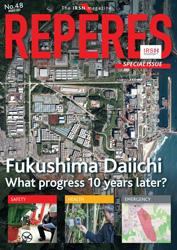
In this special issue of our newsmagazine Repères, we review how the accident happened and focus on the lessons learned regarding nuclear safety.
This accident, like those before it, has led IRSN to conduct extensive research and take action to enhance safety at nuclear facilities and radiological protection of people and the environment.
-
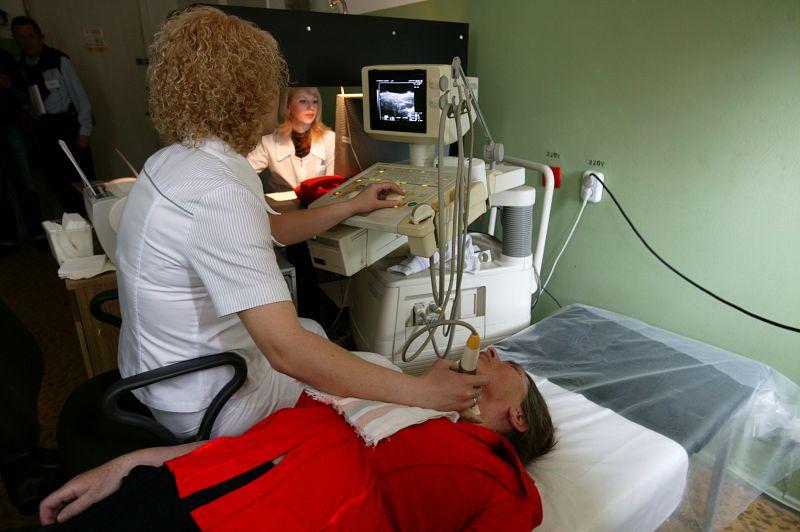
Numerous research programs and epidemiological studies were and are being conducted on the health consequences for first responders, workers, and affected populations following the accidents at the Chernobyl nuclear power plant in 1986 and the Fukushima Daiichi nuclear power plant in 2011. This in-depth feature provides a summary of these studies.
It focuses primarily on the risks of thyroid cancer in people exposed to ionizing radiation during childhood and adolescence, but also covers other types of cancer and non-cancerous effects of exposure to ionizing radiation, particularly in workers involved in these two accidents.
State of knowledge on the health consequences of a nuclear accident
2019

Shinrai ("confidence", in Japanese) is a French-Japanese research project started in 2014. Led by IRSN with the participation of Sciences Po Paris and Tokyo Tech, it aims to investigate the decision making methods used by authorities following the accident and their impact on the population.
The project studies the role of public authorities, their trustworthiness (ability to meet the confidence of citizens) and their accountability (ability to account to their own decisions), including in a context when scientific data alone do not allow to proceed and legitimize decisions.
Result of the research, this report analyses post accidental policy in Fukushima prefecture, particularly the questions linked to return or non-return to evacuated towns and villages. The report also compares the concrete experience of the inhabitants and the decision-makers with a number of principles that underlies international post accidental policy and recommendations.
Download IRSN Report 2019/00178: Shinrai research Project: The 3/11 accident and its social consequences. Case studies from Fukushima prefecture
2016
-
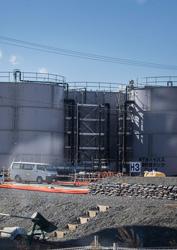
Five years after the accident at the Fukushima Daiichi nuclear plant, efforts are continuing to control the facilities in a persistently difficult environment linked to a still limited knowledge of the condition of the reactors and of the damaged buildings. These actions are part of a long-term plan that should lead to the dismantling of the plant within 30 to 40 years.
Furthermore, groundwater contamination due to the deterioration of the containment barriers is still producing diffuse radioactive releases into the environment. This situation has forced Tepco, the operator of the Japanese plant, to implement specific provisions, in particular the covering of the buildings of the damaged reactors and the construction of underground barriers.
Situation of the facilities in March 2016
-
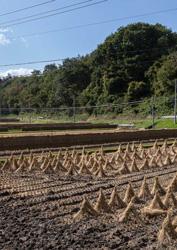
Five years after the accident, radionuclide concentrations are stable in the marine environment close to the nuclear power plant; traces are also visible in the air. Nonetheless, activity measured in foodstuffs is falling.
Radionuclide concentrations in the air in Japan in 2016
Activity of caesium deposited on the territories and associated ambient dose rates
Contamination of Japanese foodstuffs
Contamination of the marine environment
The Fukushima Daiichi accident has shown the need to improve prognostic tools designed to assist governments in their decision making in crisis situations. In Japan, the simulation had difficulty in reproducing several radioactive release dispersion episodes and discrepancies were found between the modelling results and the radiological measurements in the environment. Since 2011, IRSN has been working to improve the understanding of the Fukushima accident and its environmental consequences, by coupling the analysis of environmental measurements with atmospheric dispersion modelling.
Fukushima-Daiichi Accident: Main contamination events
Modelling of atmospheric transport and release fallout emitted during the Fukushima accident
-

In the contaminated areas of Fukushima, studies continue in order to monitor the effects of the releases on the environment and to measure the effectiveness of the decontamination actions, which have resulted in the generation of a large volume of waste. Scientists have already collected enough data to demonstrate the effects on plant and animal species. However, the results are often contradictory and different from those observed in the Chernobyl region (Ukraine) in the contaminated exclusion zone following the first major accident in 1986.
One of the main objectives of the study is to improve post-accident management, in particular taking into account the management of the forest, which has become contaminated over time, and the migration of radioactive deposits via waterways. For example, research programmes are underway to improve the modelling of the contamination of various ecosystems.
Redistribution of radioactive deposits in a post-accident situation
-
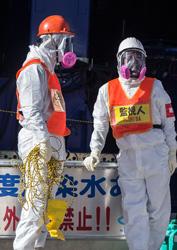
Four epidemiological studies have been initiated to regularly assess the health status of the population of Fukushima Prefecture. They in particular concern the evacuees, who were in the areas most exposed to radioactivity and fallout, and two populations at risk: pregnant women and children.
In parallel, the workers involved in the operations at the Fukushima Daiichi plant undergo a specific monitoring by Tepco, the operator of the facilities.
-

Unlike the Soviet and Ukrainian authorities after the Chernobyl accident in 1986, Japan decided to "reconquer" the contaminated territories. Five years after the accident, mass decontamination and revitalization is continuing, both in the evacuated areas and in those contaminated but not evacuated.
However, many of the evacuees believe that acceptable conditions for their return are not met. To date, only 900 of the 80,000 evacuees have returned home.
First returns and intentions to return of the populations evacuated following the Fukushima accident
-
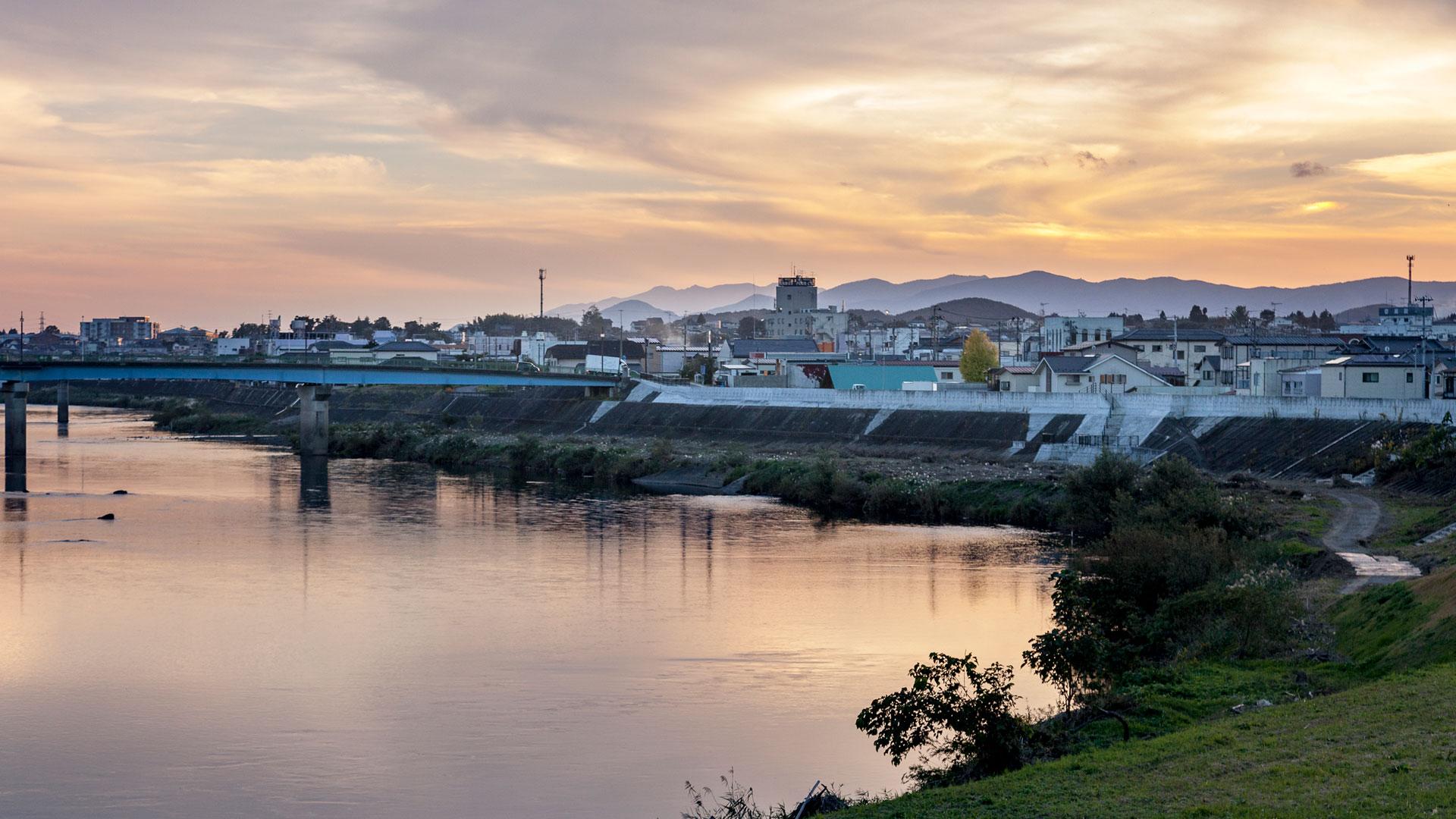
In its recommendations for the protection of people living in the long term in contaminated territories after a nuclear accident, the International Commission on Radiological Protection (ICPR) underlines the effectiveness of the direct involvement of the affected population and local professionals in the management of the situation, and the responsibility of the authorities, at both national and local level, to create the conditions and provide the means favoring the involvement and empowerment of the population.
To this end, in autumn 2011 the ICRP initiated a dialogue between representatives of Fukushima prefecture, local professionals, local communities, and representatives of Belarusian, Norwegian and French organizations. Until 2015, a series of "dialogue" meetings were held to find ways of addressing the day-to-day challenges of long-term rehabilitation of living conditions in the areas affected by the accident at the Fukushima-Daiichi nuclear power plant. IRSN supported this initiative, and many of its experts took part in these meetings.
This page highlights the main lessons that can be learnt - both in France and internationally - in terms of post-accident management in the event of a nuclear accident. It provides evidence of this experience in restoring living conditions in areas contaminated by the Fukushima accident by giving the Japanese a voice, and tells the story of four years of dialogue between radiation protection experts and a community of residents of the prefecture (parents, farmers, teachers, doctors, elected representatives, etc.) eager, more than anything else, to regain control of their lives.
After the Fukushima Daiichi Accident: Learning to live in contaminated territories
2015
-
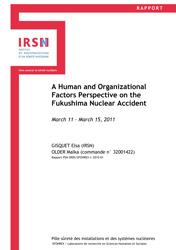
The accident which was triggered at Fukushima Daiichi nuclear power plant on March 11, 2011 in the wake of a massive earthquake and tsunami is the worst nuclear accident since Chernobyl. Four years later, as more witness accounts become available, IRSN feels useful to return to the human and organizational response to the accident inside the NPP itself.
Starting from the official reports and testimonies on the Fukushima accident, IRSN has published a report entitled “Human and Organizational Factors Perspective on the Fukushima Nuclear Accident”.
Human and organizational factors were key in determining the way the Fukushima Daiichi accident unfolded. With circumstances completely unforeseen in the manuals and procedures, actions at every level of the response structure – shift team, plant, utility, national emergency response – were determined by individual decisions and group dynamics.
By looking at each level as well as the relationships between them, this report describes the way the organizational structures and their accident management procedures contribute to or hinder the resolution of the crisis.
-

Several field studies dedicated to consequences of nuclear accidents on wildlife report significant deleterious effects for dose rates of ionising radiation estimated so low that their conclusions clearly challenge the basic knowledge in radiobiology.
On the basis of ecological data describing the bird community in the Fukushima area, a publication from IRSN in collaboration with two renowned ecologists - Anders Møller and Timothy Mousseau - highlights that a better dosimetric estimation reconciles in situ observed effects with scientific knowledge of dose-effect relationships.
IRSN information note of 24 November 2015: Realistic dose reconstruction for non-human species to assess the ecological consequences of chronic exposure to ionizing radiation in the contaminated territories after the Fukushima accident
Read the scientific publication: Radiological dose reconstruction for birds reconciles outcomes of Fukushima with knowledge of dose-effect relationships
2013
-
On March 11, 2011, the earthquake that occurred off the eastern coast of the Island of Honshu in Japan and the ensuing tsunami devastated the Japanese territory in the Tohoku region, causing widespread destruction of local infrastructures and untold suffering for the local population.
The natural catastrophe also caused major damage to the Fukushima Dai-ichi Nuclear Power Plant, which led to a core meltdown in three nuclear reactors and loss of cooling for several fuel storage pools. Large amounts of radioactive materials were released into the environment. The accident was rated Level 7 on the International Nuclear Event Scale.
Beginning on March 11th, IRSN took action to analyze the ongoing crisis and the probable radiological consequences of the nuclear accident, in order to provide the President of France, the French authorities and competent agencies, the Nuclear Safety Authority, elected officials and the French Ambassador to Japan with up-to-date information during the critical phases of the accident.
IRSN has also performed an extensive analysis of the supplementary safety reviews recently conducted on French nuclear facilities in order to draw the initial conclusions concerning the accident.
A more in-depth analysis of the events that took place is still necessary however, to obtain more precise operational feedback about the events. This film has been made to help viewers better understand the events that took place at Fukushima. In its current version, the film focuses entirely on the events that resulted in a core meltdown in three of the reactors at Fukushima. The management of the cooling systems for the fuel storage pools, the impact of the accident on plant employees, on the local population and on the environment, are not covered in the film.
© IRSN - 2013 -

From 2011 to 2013, IRSN published a newsletter for French citizens living in Japan. Prepared by experts from the Institute, this report was intended to help reduce as much as possible the exposure of French expatriates to environmental pollution persistent in parts of Japan, mainly in the districts of Fukushima, Tochigi, Ibaraki and Miyagi.
The latest version of this newsletter, published in June 2013 in French, gave IRSN’s recommendations in the light of the most recent data published in Japan on the evolution of the environmental contamination as well as that of the foodstuffs produced in Japan.
It also covered two particular topics, developed respectively in appendices 1 and 2:
- the evolution of radioactive deposits in the terrestrial environment since the year of the accident, and its impact on the zoning set up by the Japanese authorities around the Fukushima Daiichi nuclear power plant;
- the evolution of the levels of contamination observed in the different categories of foodstuffs produced in Japan, and IRSN’s assessment of the risks for consumers.
-
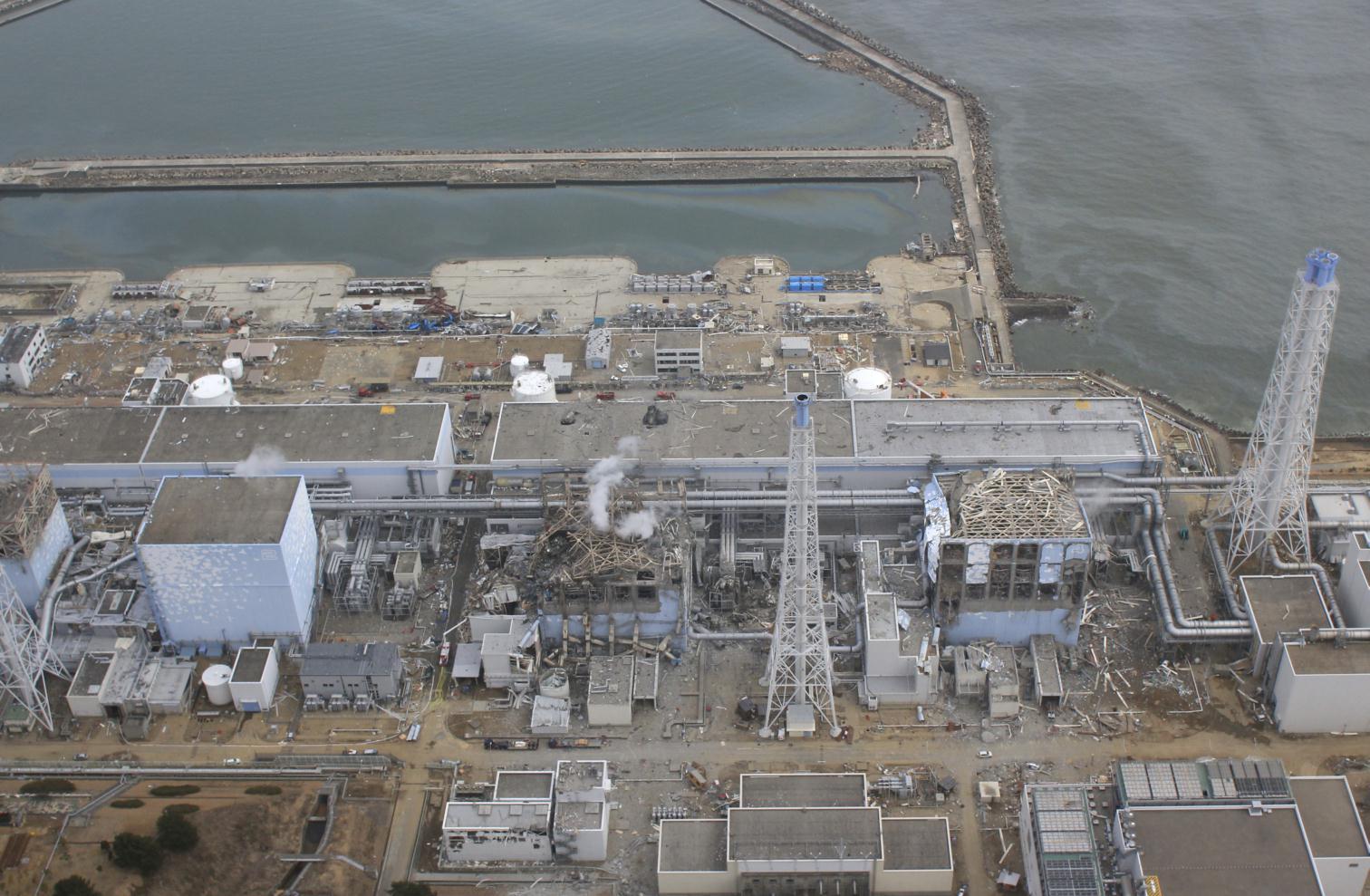
On August 5, 2013, a news report by Reuters (read) revived questions concerning the management of the contaminated water on the site of Fukushima-Daiichi.
For IRSN, there was no sudden aggravation of the situation in recent days, but statements by the authority present at the site reminding the operator TEPCO of the need to put in place as quickly as possible corrective actions regarding the diffuse contamination of the Pacific Ocean.
Volumes of contaminated water at the site are estimated at several hundreds of thousands of cubic meter. The natural phenomena that led to the accident that affected TEPCO’s Fukushima Daiichi nuclear power plant on March 11, 2011 also led to flooding of the site leading to an accumulation of water in the basements of the power plant buildings. Furthermore, since the accident, the water used to cool the damaged cores of the reactors has been flowing into the basements of the buildings from where it is pumped in order to be re-used, after treatment, to cool the reactors.
However, the galleries below the plant are not completely sealed; there is a suspicion of contamination of groundwater. Tepco is trying to strengthen the leak tightness of the ground by injection of sealing products and by creating a first barrier between the facilities and the ocean (expected to be completed by mid-2014).
2012
-

This report illustrates both the vast amount of data that are now available on the accident’s sequences, and the limited understanding achieved so far of a particularly complex accident, beyond its obvious initiating events.
Detailed understanding of how nuclear accidents unfold, of their consequences of all kinds, and of the related decision-making and response processes is a major source of short- and long-term progress in nuclear safety, radiation protection and emergency response management.
-
These three short videos explain the sequence of the accident, its consequences on the terrestrial and marine environments, and the protection and long-term monitoring of the population.
The development of the accident
© IRSN - 2012The contamination of the environment
© IRSN - 2012Health issues after the accident
© IRSN - 2012 -
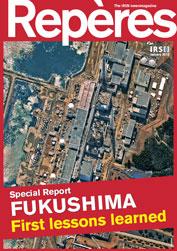
One year after the Fukushima Daiichi accident, IRSN proposes a special issue of its newsmagazine focused on the first lessons drawn by IRSN regarding nuclear safety.
The first part revisits the accident and its aftermath, and the mobilization of IRSN during the crisis. The second part looks at the assessments launched in 2011 to check the conformity of French nuclear facilities. It also addresses research that could better predict the fate of radionuclides released from Fukushima, as well as to improve the monitoring and radiation protection in France.
-

On 9 August 2012, the scientific journal Nature published on its website a scientific article revealing physiological and genetic damage in several generations of a butterfly population in the vicinity of the Fukushima Daiichi nuclear power plant. In the weeks following its publication, the article was given considerable coverage in the French and international press.
IRSN's laboratories are involved in several scientific collaborations with Japanese universities and scientific organisations focusing on the environmental impact of the Fukushima accident. The Institute's science watch team also focuses on important scientific publications on this subject. Within this context, it has produced an analysis of the article on mutations observed in a butterfly species.
IRSN information report: Analysis of the Japanese study on the biological impact of the Fukushima nuclear accident, published by the scientific journal Nature on 9 August 2012
Read the publication in Nature : The biological impacts of the Fukushima nuclear accident on the pale grass blue butterfly
-

IRSN publishes two new information reports regarding the impact of the radioactive contamination of the environment following the Fukushima-Daiichi accident.
The first document presents and comments the latest information gathered by IRSN on the impact of radioactive release on the marine environment.
In the second document, IRSN presents its analysis of data published in Japan on the contamination of the terrestrial environment, particularly of food produced in areas impacted by the accident. Overall, the results of the first half of 2012 show a significant improvement of the situation for many categories of food (including vegetables, meat, livestock and milk), compared to spring 2011, but significant concentrations of caesium-134 and 137 continue to be measured regularly in certain types of products.
Download the documents:
-

This new information sheet about the situation at the Fukushima Dai-ichi power plant and the plan by the operator TEPCO to regain control of the facility is based on information publicly available.
Accident at the FUKUSHIMA DAI-ICHI nuclear power plant: Assessment of the situation in June 2012
2011
-
Date of publication: 24/03/2011
To assess air contamination levels resulting from the accident affecting the Fukushima Daiichi nuclear power plant, IRSN made a preliminary evaluation of the quantity of radioactivity that may have been released over the period from 12 to 22 March 2011 by the three damaged reactors.
This assessment is designed to give a realistic order of magnitude for the releases consistent with an interpretation of information provided by Japanese authorities and the IAEA as well as the results of field measurements using reasonably conservative assumptions.
-
Date of first publication: 19/03/2011
IRSN has simulated the atmospheric dispersion of estimated releases emitted between 12 and 20 March using its long-range numerical model (a scale of several hundred kilometres), and based on the meteorological forecasts supplied by Météo France. This simulation was applied to caesium-137, used as a tracer in the radioactive plume during this period.
The first modelisation, on a regional scale, was produced on 17 March 2011 and updated on 19 March 2011 and 22 March 2011. A simulation on a worlwide scale was first produced on 19 March 2011 and updated on 19 March 2011, 22 March 2011 and 8 April 2011.
Simulation: Dispersion of radioactive releases in the air on a regional scale
Version of 22 March 2011Simulation: Dispersion of radioactive releases in the air on a worldwide scale
Version of 8 April 2011 -
Date of first publication: 19/03/2011
IRSN has estimated the doses likely to have been received by a person exposed to the radioactive plume, assuming that this person remained in the same place and with no protection (i.e. outside) throughout the entire release period.
For these dose calculations, IRSN studied the case of a one-year old infant, the most sensitive to iodine-131 (dose to the thyroid). In other words, these are the most cautious hypotheses. The simulations below show how the doses evolve over time, throughout the simulation period. If there are further releases in the future, these doses may increase further if the most exposed people are unprotected.
Whole body doses likely to be received by a one-year old infant with no protection during the releases
Version of 22 March 2011In the event of an accident, the recommended minimum dose values used to launch protective actions are 10 mSv for taking shelter and 50 mSv for evacuation. Below 10 mSv, the health risk is deemed to be sufficiently low and therefore such protective actions are considered unnecessary. To compare, the average annual dose received in France due to natural radioactivity and medical exposure is 3.7 mSv.
Doses to the thyroid likely to be received by a one-year old infant with no protection during the releases
Version of 22 March 2011In the event of an accident, the recommended minimum dose values for prescribing the ingestion of stable iodine are 100 mSv in Japan.
-

Dtae of publication: 27/05/2011
On April 8, 2011, 28 days after the nuclear accident at the Fukushima Daiichi nuclear power plant (NPP), IRSN published the first worldwide map of doses likely to be received by the Japanese population as a result of external irradiation occurring the 1st year following the accident.
This map was derived from dose rate data collected by the US DoE/NNSA based on airborne measurements and published on their website on April 7, 2011. The IRSN map revealed significant external doses in a northwest zone from the NPP, about 20 km in width and 50 to 70 km in depth. Other dose maps were then produced and published by DoE/NNSA on April 18, 2011 and more recently by the Japan "Ministry of Education, Culture, Sports, Science and Technology" (MEXT), on the 44th day after accident. These dose maps were consistent with the first dose assessment carried out by IRSN and show dose values of the same order of magnitude (difference less than a factor of 2.5).
On the 56th day after the accident, MEXT published the first maps of caesium depositions. They revealed high values, comparable with the most contaminated areas of Chernobyl, even beyond the initial 20 km-radius evacuation zone around the Fukushima plant. A new dose assessment was carried out by IRSN on the 66th day after the accident to estimate projected doses due to external exposure from radioactive deposits, for exposure durations of 3 months, 1 year and 4 years before evacuation.
The estimated projected doses reach particularly significant values, some of them even above 200 mSv, which are no longer in the range of "low doses" according to UNSCEAR definition. Moreover, these dose levels do not take into account neither the doses received from other pathways (such as immersion within the plume and inhalation of particles in the plume during the accident), nor the doses already received or to be received from ingestion of contaminated foodstuffs. The total effective doses to be received (external + internal) could be much higher according to the type of deposit (dry or wet), diet and source of food.
The number of Japanese people living in the most contaminated areas outside the initial 20 km-radius evacuation zone around the Fukushima plant (874 km2 with caesium 134+137 deposits higher than 600,000 Bq/m2 ) was estimated to 70,000 people including 9,500 children of 0-14 years in age. This significant number reaches about 26% of that of Chernobyl (270,000 people) for a surface area only 8.5% of that of Chernobyl (10,300 km2).
IRSN have also studied:
- the impact of the selection of a dose reference level, within the range of 20 to 100 mSv recommended by ICRP in emergency situations, on the number of people to be evacuated;
- averted doses for these populations resulting from an evacuation according to 3 different scenarios: evacuation 3 months, 1 year or 4 years after the accident.
The level of projected external doses in upcoming years - up to 4 Sv lifetime dose in the most contaminated areas (30 million Bq/m2 of caesium-137 + 134) - requires the implementation of protective actions such as evacuation of population.
According to the ICRP recommendations in emergency situations, the selection of the highest protective reference level, i.e. 20 mSv, would avert external doses above this level for 15,000 to 20,000 people.
If the Japanese authorities decide to take an even more protective reference level, for example 10 mSv for the 1st year, the averted external doses for the affected populations (70,000 people) would be much higher if the evacuation is quickly prescribed. An evacuation one year after the accident would result in a 59% decrease of the projected external dose for this population; evacuation three months after the accident would result in an 82% decrease.
This policy for preventing the risk of developing long-term leukaemia and radiation-induced cancer has been clearly understood by the Japanese authorities as shown in the map of population evacuation beyond the initial zone of exclusion of 20 km brought to the IRSN knowledge on May 16, i.e. the 66th day after the accident. The prescribed evacuation area seems to meet the 20 mSv reference level - the most protective dose value within the range recommended by ICRP in an emergency situation. This decision made by the Japanese authorities proves retrospectively the relevance of the IRSN's radiological assessment map - the first to have been published worldwide, 28 days after the accident.
-
During the weeks following the earthquake and tsunami that hit Japan on 11 March 2011, IRSN published regular information reports in French regarding the status of the nuclear reactors at the Fukushima Daiichi nuclear plant, and the consequences of the radioactive releases in the environment. Some of those documents were translated in Japanese and are proposed below.
- 22/03/2011 - IRSN について Download
- 22/03/2011 - 2011年3月12日より福島第一原子炉から放出された放射能雲大気中拡散シミュレーション Download
- 22/03/2011 - 日本から流れる放射能雲の移動:IRSNは環境の監視を強化 ― 予想される空気中セシウム137は微量 Download
- 22/03/2011 - よくある質問 Download
- 23/03/2011 - IRSNによる3月22日迄に福島第一原子力発電所から放出された放射能の見積もり評価発表 Download
- 08/04/2011 - 福島第一原発事故の放射能放出が及ぼす超遠距離におい ての影響 - 2011年3月30日 Download
